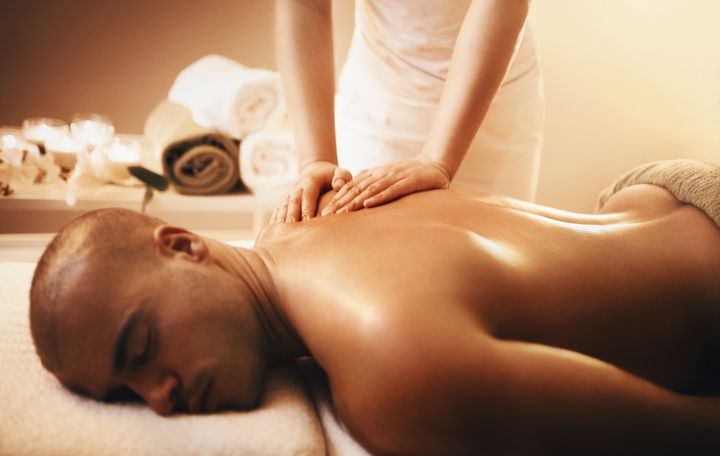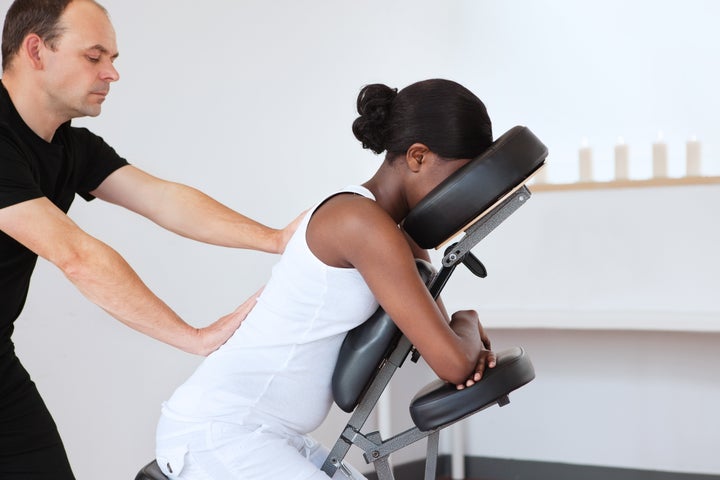
You lie down on the massage table to de-stress, get out a kink or simply engage in a little self-care.
As a client, there may be several things running through your mind: Should you remove all of your clothes? Is it bad practice to fall asleep during a treatment? What about engaging in conversation with the therapist?
Your massage therapist, who is well-versed in anatomy, physiology and kinesiology, has other thoughts — like making sure you have a pleasant experience (and not anything to do with your unshaven legs).
To see what goes on in the mind of a massage therapist, we interviewed several of them about what they wish their clients knew before lying down to unwind.
1. Don’t hide issues or conditions from us
“Usually before every massage, there is some sort of medical intake done, whether it is done via a form you fill out [or] verbally with your therapist. We don’t do this for fun. If there are any medical conditions, such as past surgeries, medications such as blood thinners or other medical issues you have, it may change the way we do certain massage strokes or may even determine if it is safe to perform a massage in the first place.
Many people may avoid telling [us] this medical information because they think they may not get the massage they want if the therapist is made aware, or they are simply nervous about the therapist judging them. Nonetheless, it is important that we know what’s going on so that we don’t cause damage, injury or make a condition potentially worse.” — Karen Stoner, a Pennsylvania-based prenatal, infant and fertility massage therapist
2. We can’t get “knots” out in one session
“These adhesions build over time due to incorrect posture. If you look at massage as preventative, however, it gives you the chance to address your aches and pains before they get unbearable.” — Chasity Wilson, a massage therapist based in Savannah, Georgia
3. We don’t need your help
“The objective of a massage is to give you the opportunity to let go of any stress and tension so that your body can move from the ‘fight or flight’ division of your nervous system to the ‘rest and digest’ division. If you are giving us your hand or arm during a session, or you’re trying to keep control over how we move your body, it is counterproductive. Try not to contribute. Your only job is to breathe.” — Wilson

4. We all experience bodily functions
“Passing wind can be embarrassing, but it’s important to realise that it’s very common during massage sessions. It makes sense — the therapist is targeting the lower back and glutes area, and this may cause some gas to pass through. Don’t be embarrassed! It’s extremely common and not something to feel any shame over.” — Jean Campbell, a massage therapist and life coach
5. Our time is valuable and tight, so please respect that
“Many massages are scheduled to start at a certain time and last a certain length of time. This is done so that we can give each client our full attention and the proper care they need in the best conditions possible. So if you have a 60-minute massage scheduled at 1 and you stroll in at 1:25, you probably won’t be able to receive a full 60-minute massage because there is likely another person scheduled at the end of your 60 minutes. Don’t get upset at the therapist for cutting your appointment short and still charging you for the full time slot that was reserved for you.
Yes, we understand that emergencies arise, and every therapist is different in how they are able to handle things like cancellations and lateness, but we wish our clients understood that if we don’t stick to our schedule, it makes for a big mess in a lot of ways. We respect our clients’ needs and time, and we only ask that they respect ours.” — Stoner
6. You don’t need to apologise for falling asleep during a massage (even if you snore a little)
“I very often see clients who are so accustomed to running on adrenaline that they are surprised (and even embarrassed) by how easily they doze off on the treatment table. When they are finally given the opportunity to quiet their minds and drop into their bodies in a safe and nourishing environment, they are able to shift out of the frantic ‘fight or flight’ sympathetic nervous system state and slip into the restorative ‘rest and digest’ parasympathetic nervous system state. This is totally normal, and a compliment to your therapist. As for snoring — it’s normal to experience a bit of congestion while you’re in the face cradle, which can make you more apt to snore.” — Kaitlin Frady, a Philadelphia-based massage therapist and physical therapist assistant
7. When it comes to body hair, we’ve seen it all
“There’s no need to apologise for not shaving before an appointment. In fact, avoiding shaving before a session lowers any risk of infection via any small nicks or abrasions in the skin.” — Frady
The only thing to note: Your therapist may need to use a little extra oil or lotion on areas of increased body hair to prevent any uncomfortable friction or skin irritation.

8. Don’t be shy to give feedback
“Even with over 20 years of experience as a massage therapist, I still can’t read the mind of my clients, hence why I stress the importance of vocalising how you feel throughout the session. If something doesn’t feel right or the massage is getting too deep, please speak up and say something. Ninety-nine percent of therapists will appreciate the feedback as it helps us tailor the session to ensure the best results.” — Campbell
“We hear from many clients on our tables about terrible experiences they’ve had with prior services, from walking away irritated by a ‘too-chatty’ therapist to music that was being played that the client didn’t like. Your therapist wants to provide you with effective care, so please tell them if anything is bothering you.” — Gina Tibbs, a California-based massage therapist
9. What you wear (and don’t wear) is important
“So often we have clients who are confused as to what they should keep on or take off. Some types of massage and bodywork are done clothed, so wearing movable athletic attire is a good idea. Other modalities are performed more easily with nothing on (just a towel or sheet). That being said, if you are more comfortable with undergarments or you prefer to be fully clothed, techniques can be modified.” — Tibbs
10. Every massage therapist is different
“Many clients come in expecting their treatment to be the same as a prior experience with another therapist, but training and experience can be dramatically different between therapists, and their approaches will vary depending on their background.”— Tibbs
“Unless you have been seeing a particular therapist for multiple sessions, the preferred pressure tolerance on both ends may be unknown. Remember, this is your session and you should be comfortable. If the therapist doesn’t want to change their pressure, you either need to find another therapist or try a different modality.” — Stoner